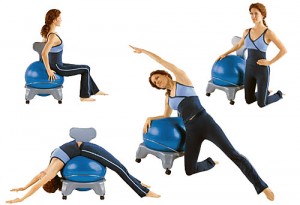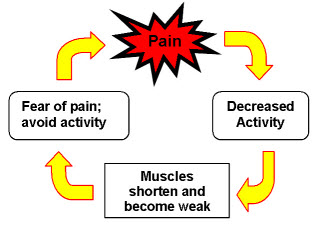Want a quick and easy tip that can help your employees stay flexible and injury free? There are many exercises that can be done during breaks at work that will complete a routine daily workout – and a number of them can be done with this simple tool called an exercise ball (aka: swiss ball).
Employees can do activities such as sit ups, pushups, or placing the ball on the wall, in the small of their backs, and doing rolling squats! There are countless ways to get a full workout in just a few extra minutes throughout the day. These few extra minutes taken by the active employee, instead of getting up an extra hour before work or trying to squeeze the gym in after work, can bring about a reduced stress level and reduced potential for injury. Plus those precious extra minutes are valuable to an employee, and that could mean a happier worker. And we all know a happier worker means a more productive worker. And the long term benefit of having healthy imployees is increased productivity, and more time at the job – so it’s a win/win.
Here’s to getting on the ball and promoting the health of all your employees!

Source: Gaiam.com





